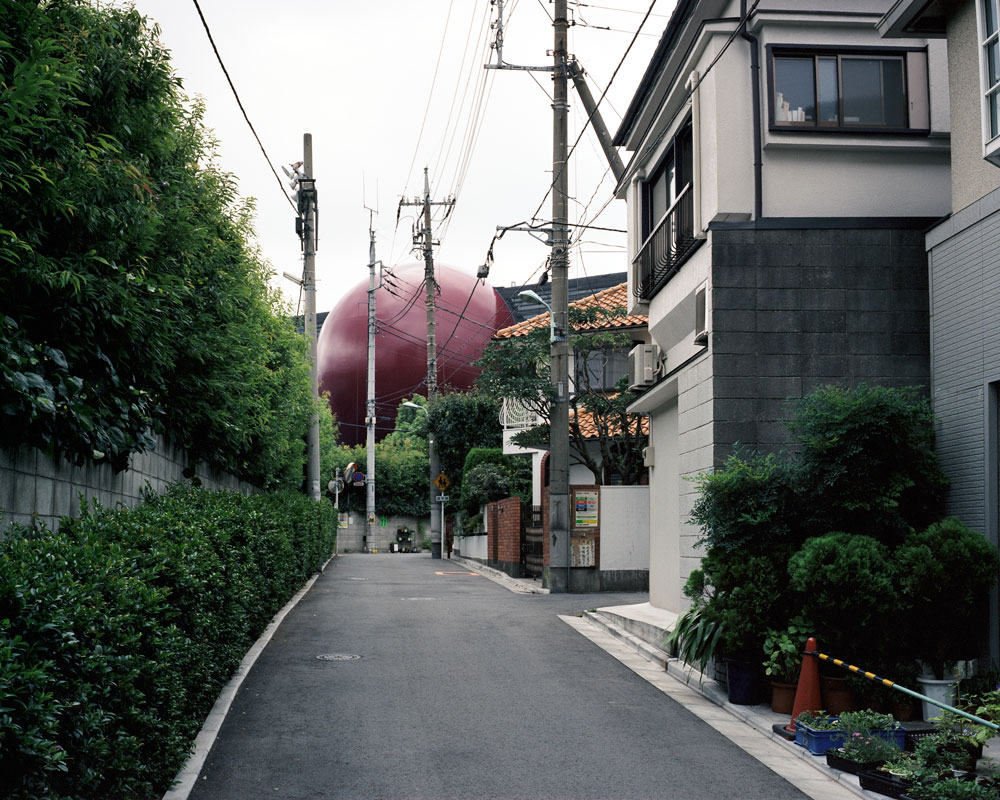
Paysages urbains, Tokyo, Japon 2000.
« Paysages Urbains » est une étude photographique sur le territoire des villes à travers le monde. Ces images proposent une relecture de l’évolution contemporaine de nos cités et espaces publics. La ville, véritable réservoir de couleurs, où viennent se juxtaposer masses de béton, aplats de bitume, parois minérales et éléments végétaux, est appréhendée comme une scène en mutation. Il s’agit de saisir le visage aléatoire de la ville, résultat d’innombrables années d’évolutions et de cohabitations.
© 2003 David Giancatarina
53 Photographies de David GIANCATARINA Texte de Charles Floren
« Urban Landscapes » is a photographic study based on cities and their territories all over the world. These pictures convey a re-reading of our cities and public areas’ contemporary evolution.
The town proves to be tremendous reserve of colours where concrete blocks, rock walls and vegetal elements are placed side by side. The City’s face is one of a territory overthrown by reccurent changes.
That is all the work is about : trying to grasp this kaleïdoscopic face which has become the aesthetic result of innumerable years of evolutions and cohabitations
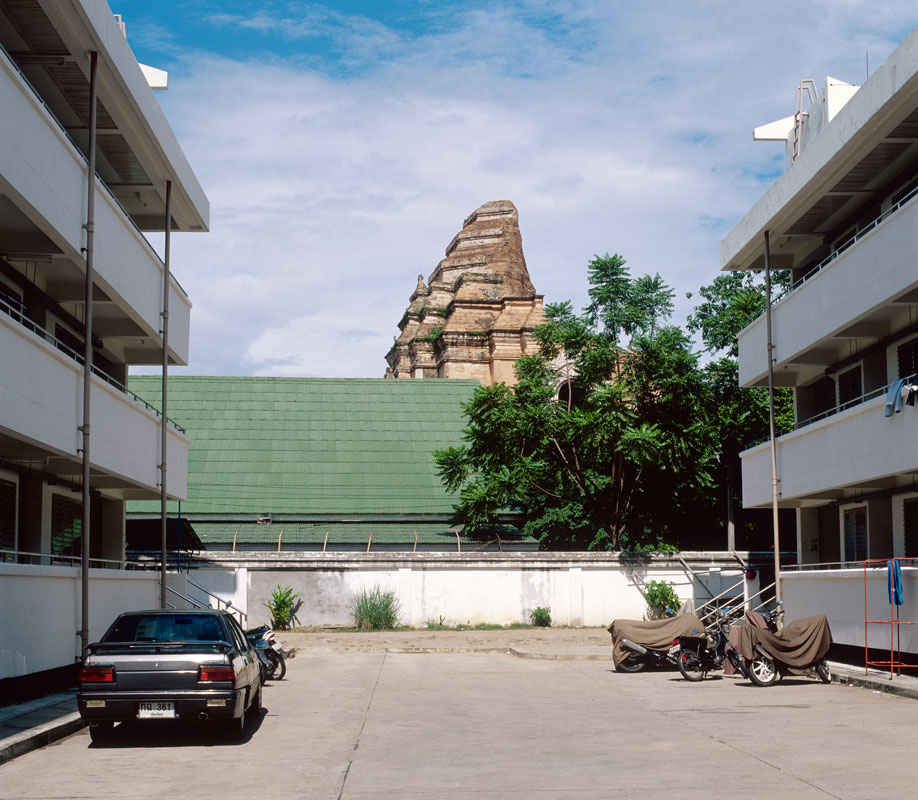
Paysages urbains, Thaïlande 2001.
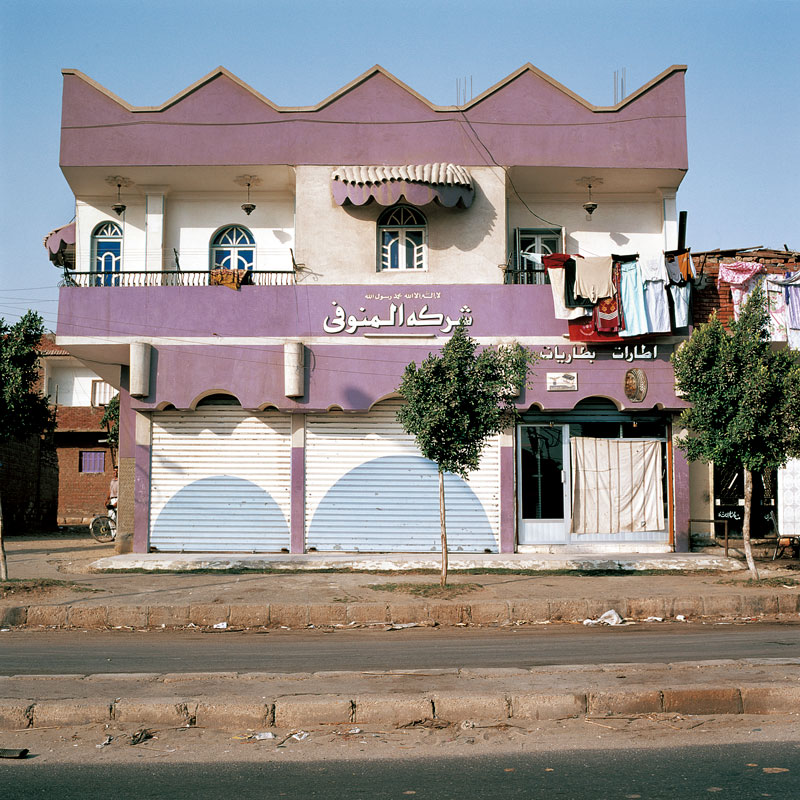
Paysages urbains, Le Caire, Egypte 2000.
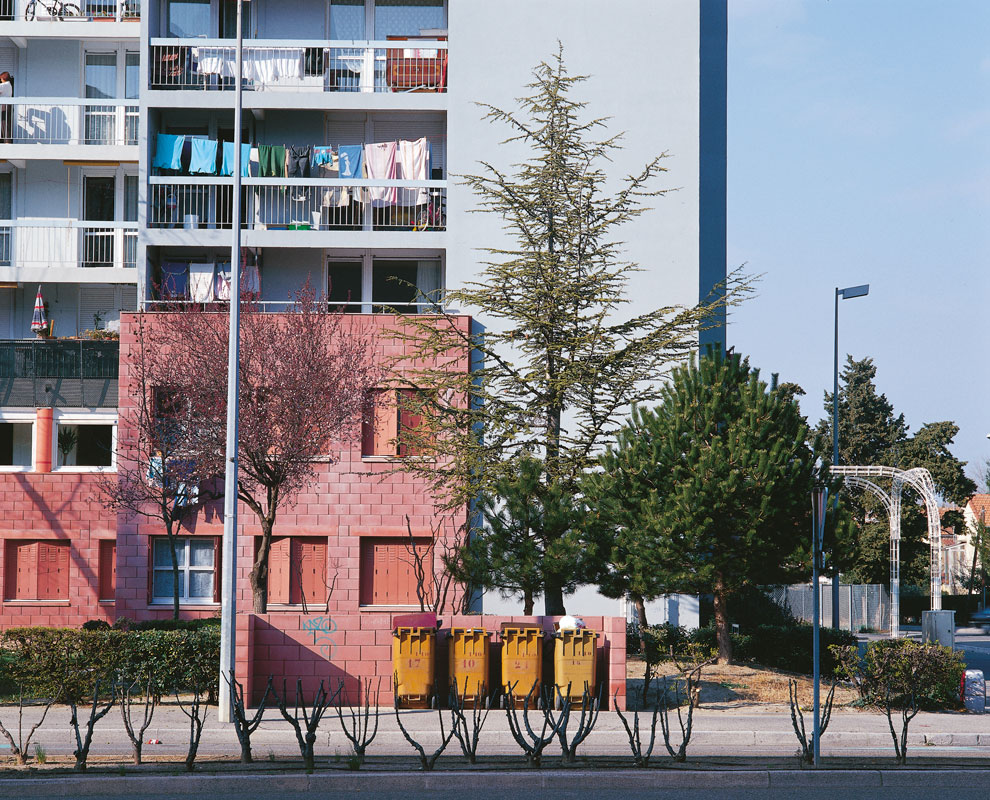
Paysages urbains, Avignon, France 2000.
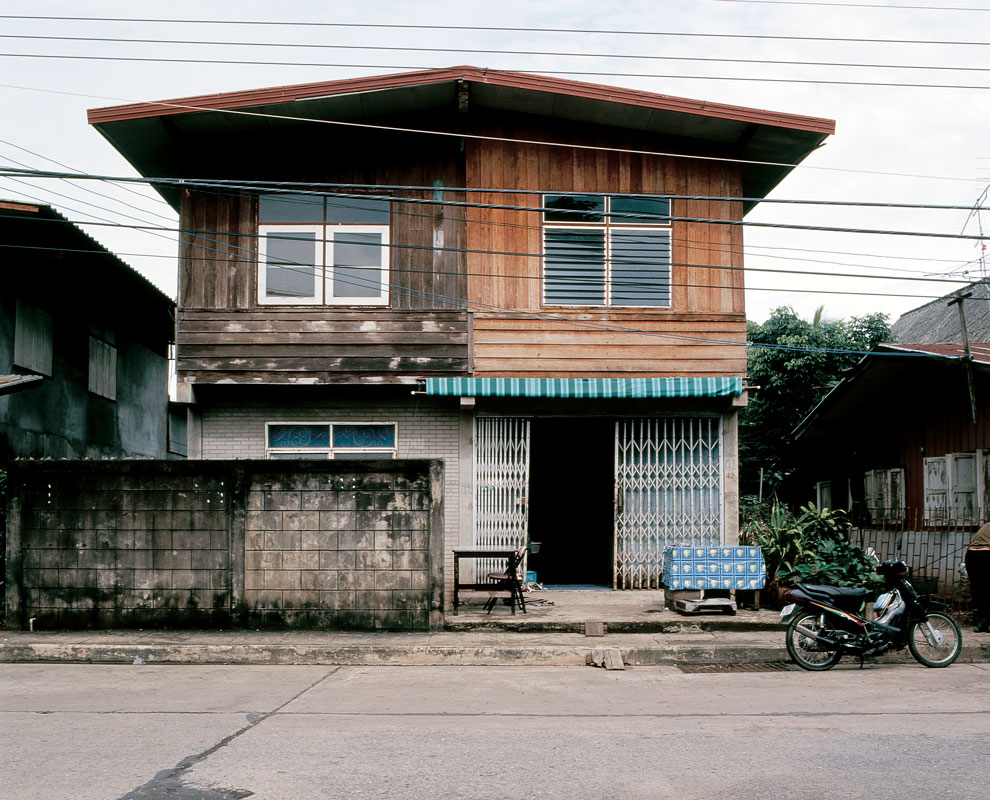
Paysages urbains, Thaïlande 2001.
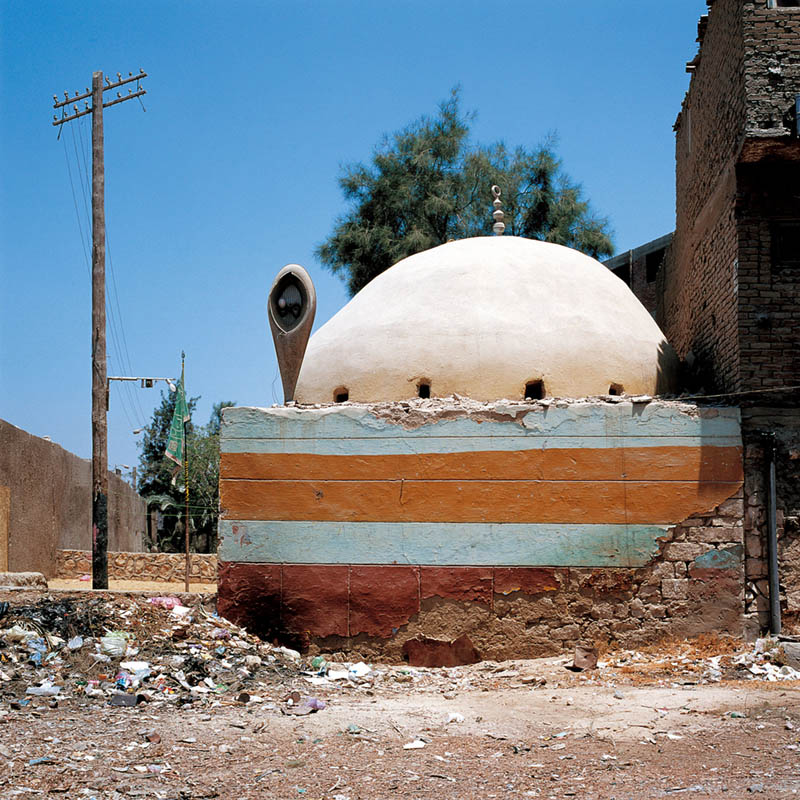
Paysages urbains, Le Caire, Egypte 2000.
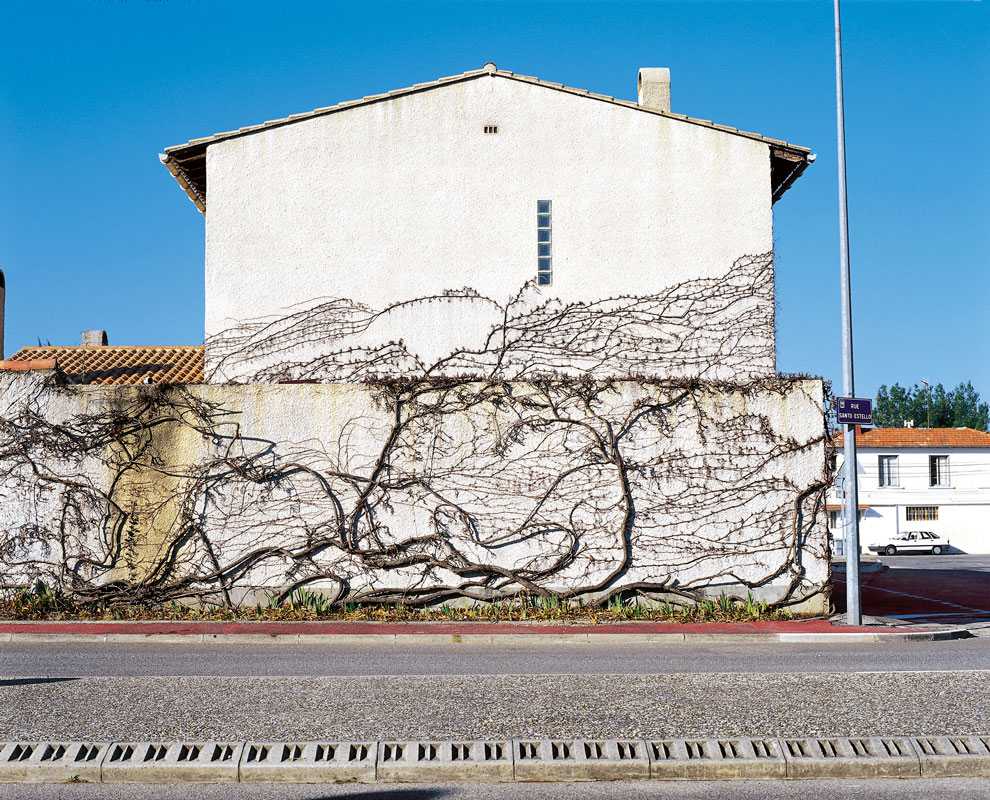
Paysages urbains, Avignon, France 2000.
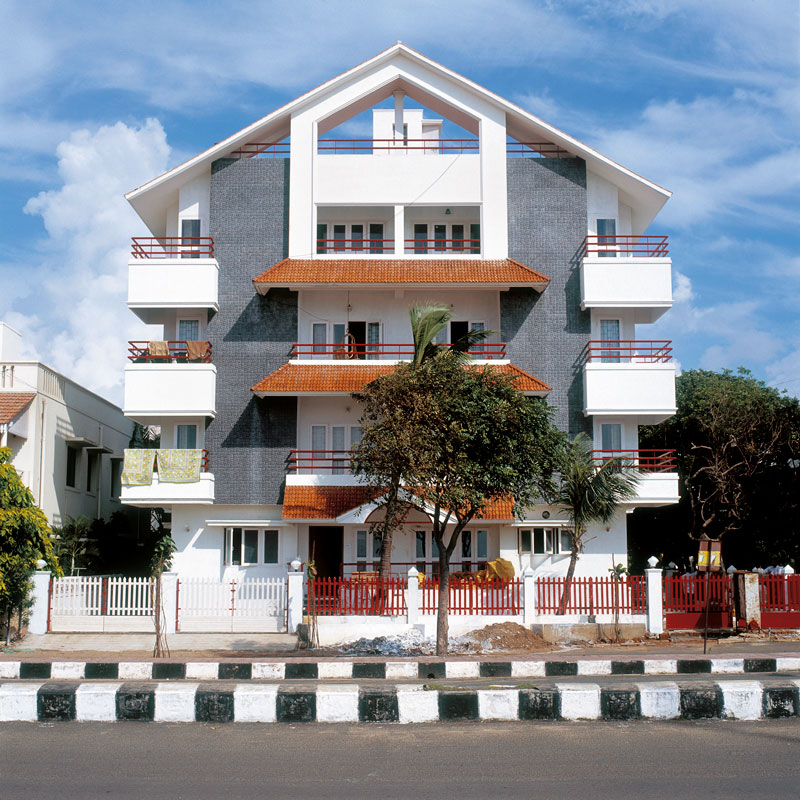
Paysages urbains, Chennai, Inde 2002.
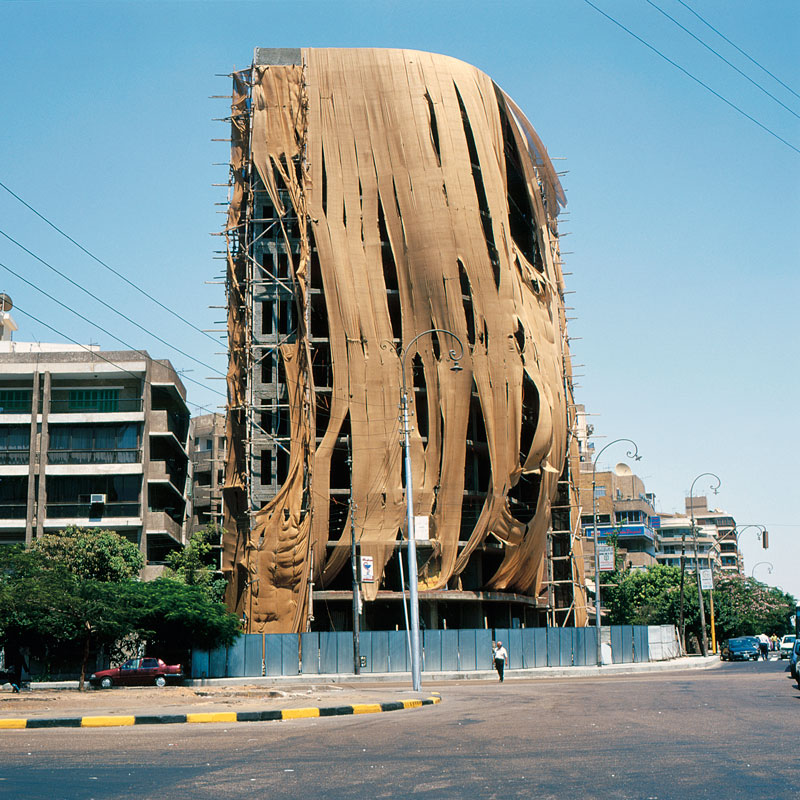
Paysages urbains, Le Caire, Egypte 2000.
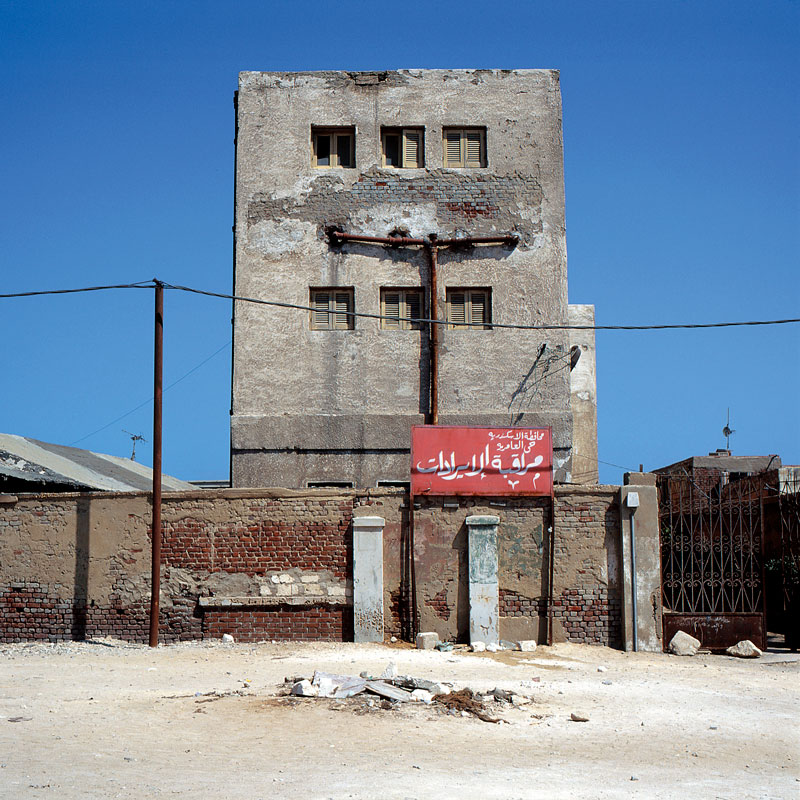
Paysages urbains, Le Caire, Egypte 2000.
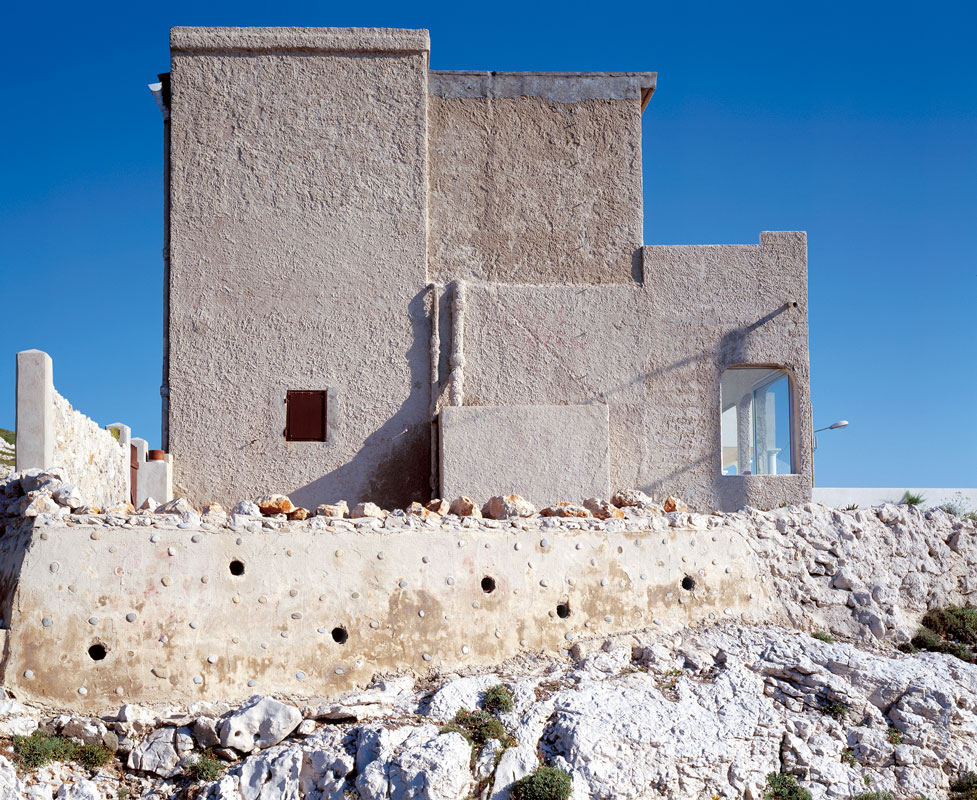
Paysages urbains, Marseille, France 2001.
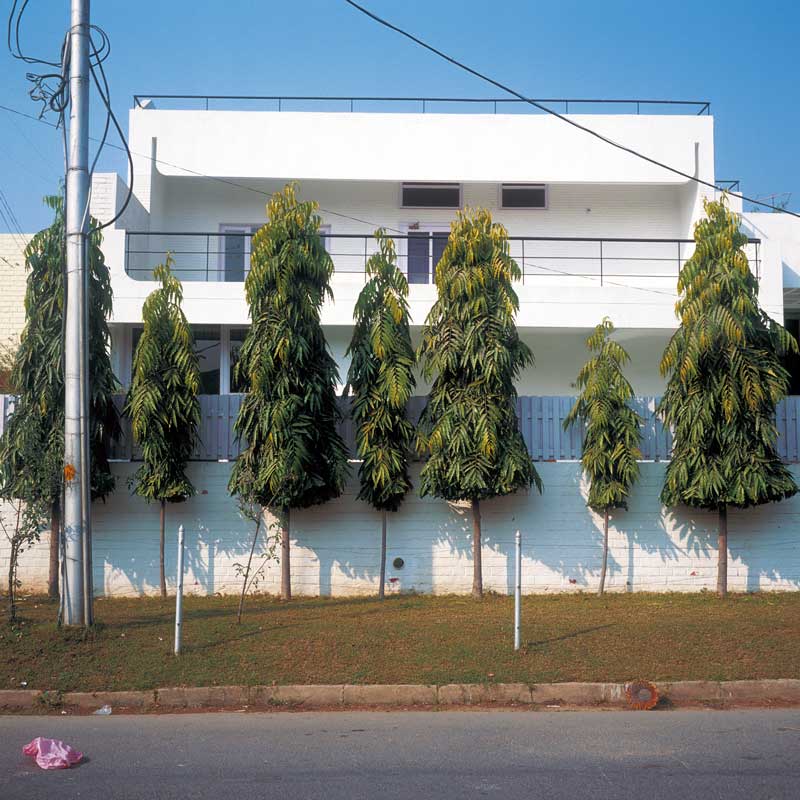
Paysages urbains, Chandigarh, Inde 2002
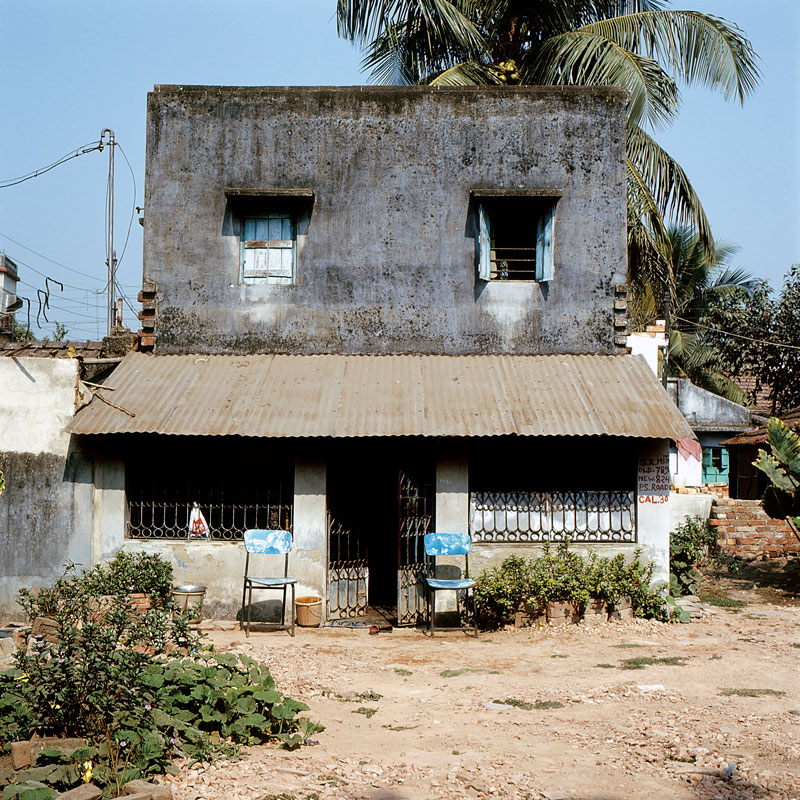
Paysages urbains, Chennai, Inde 2002.
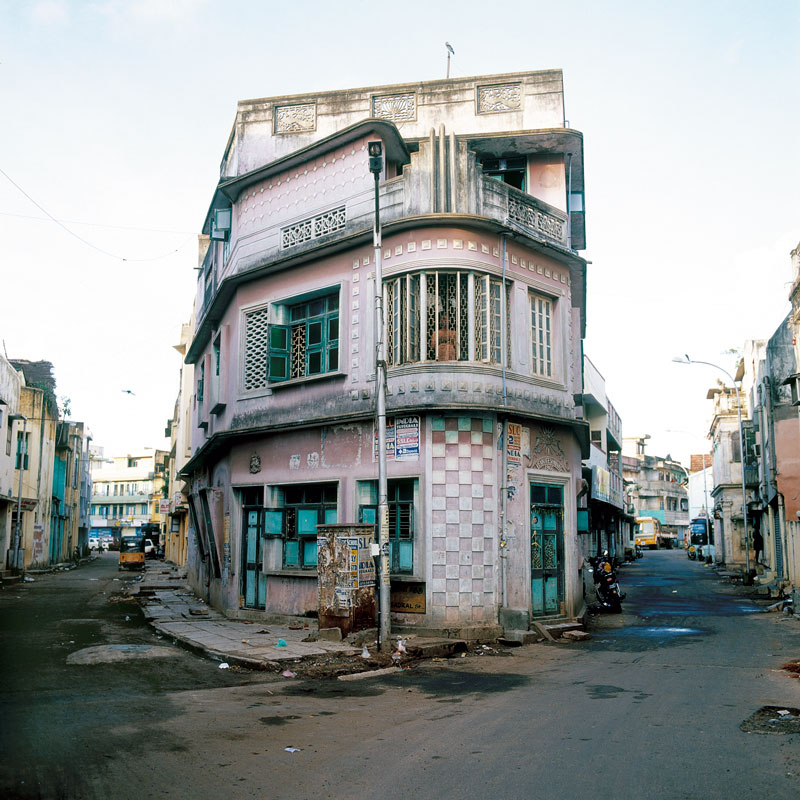
Paysages urbains, Chennai, Inde 2002
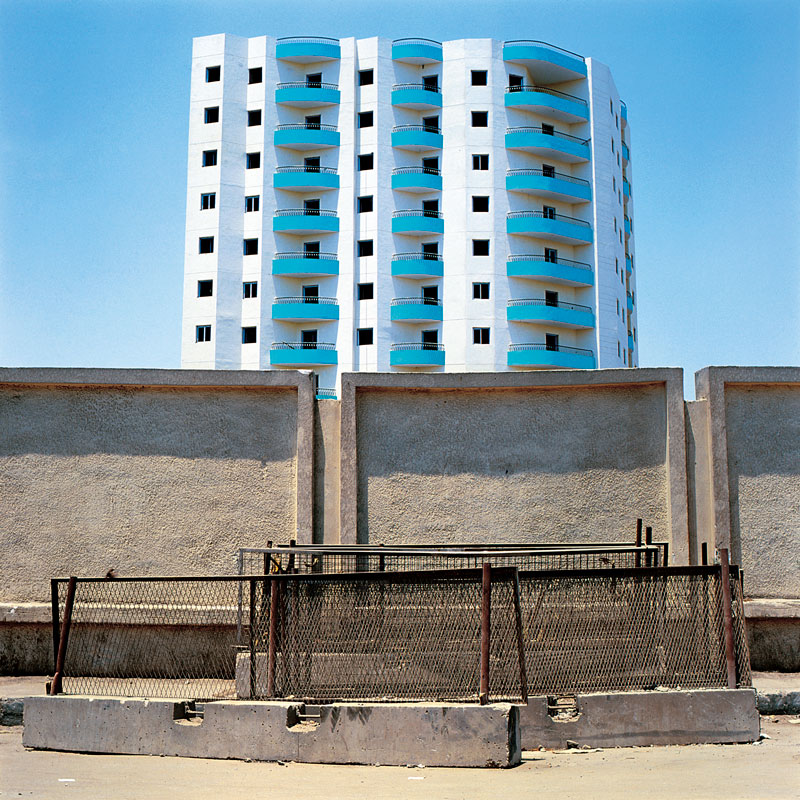
Paysages urbains, Le Caire, Egypte 2000.
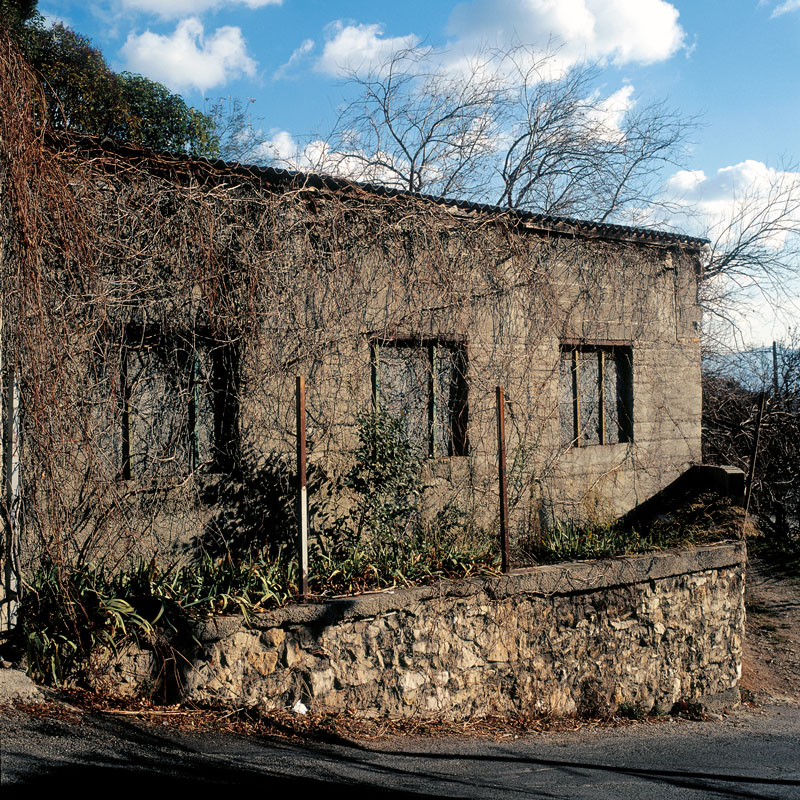
Paysages urbains, Marseille, France 2001.
Le détail est ce qui ne change pas.
On reconnaît le détail à ce qu’il ne change pas d’une version à la suivante, entre deux générations.
Mais entendons nous bien sur ce qu’est le détail ; et dans une ville en particulier : si dans une vue d’Avignon on voit un saule pleureur et dans une autre du Caire un aride buisson, c’est de climat qu’il s’agit.
Le climat conditionne l’architecture, EN PRINCIPE… ce n’est donc pas un détail.
Revenons en Avignon ; un garage a été muré, il se trouve pris dans le rempart en pierres apparentes.
Le cadre le place à peu près au centre de l’image, carreau dans un carré plus grand.
Le ton des pierres joue avec celui du ciment et des parpaings ; au premier plan on voit trois bornes en calcaire border un trottoir en galets jaunes.
Une touffe d’herbe folle complète l’aspect désolé de l’endroit.
Malgré la franchise des ombres cette verdure indique qu’il ne fait pas un temps trop sec.
Mais le muré a été superficiellement démoli, les creux des parpaings dessinent une sorte de moucharabieh ou une géométrie accidentellement picturale.
Le même motif à Chandigarh n’a plus rien d’accidentel, il sert de cloison à une terrasse.
Au Caire, c’est un pan de mur décrépi qui laisse voir la géométrie de la brique.
En changeant d’échelle cela devient les ouvertures de la cage d’escalier sur une façade ; en Avignon comme à Panaji.
Le métrage alloué à une façade, un mur aveugle, le mauvais entretient d’une maison pauvre,
la couleur vive d’un mur flambant neuf, ce sont des détails dont la cause polymorphe, éclectique et vagabonde
(faite de la somme des vies chacun) assure la constance ici et là-bas.
Un coin au fond d’une impasse ou un bout de terre entre deux rond-points sont l’archétype qui fascine les sciences sociales et font les villes, parce qu’ils raccordent les éléments proportionnés à la dimension du terrain.
Comment ne pas penser à Gordon Matta Clark qui, à New York, avait racheté ces interstices entre les constructions.
Et bien que ce soit dans une toute autre approche et avec une intention toute différente, on voit ici l’influence de son oeuvre.
Ce goût pour l’infrastructure architecturale qui fait qu’aujourd’hui la photographie d’un mur est déjà une vue en coupe.
Dans cette optique, David Giancatarina compose ce qu’il appelle des paysages urbains ;
et qui se propose en fait d’être un seul paysage urbain ; dont le détail est ce qui ne change pas.
Plutôt qu’une étude sur les villes et leur évolution à travers l’espace public, ce serait un relevé dans les artères,
le bâti et les façades qu’elles séparent de ce qui y fait une image ; mais une image commune all over the world.
Mathieu Provansal.
Paysages Urbains : Photographies David Giancatarina.
The details are visible in the unchanging elements.
Details are elements that do not change from one version to another or between two generations.
But let us firts decide what constututes a detail, especially in a city.
if we see a weeping willow picture of Avignon and a whitered bush in a picture of Cairo, it is only because of the difference in climate. Climate generally influences architecture…so it cannot be considered a detail. To return to Avignon, a garage has been walled in and finds itself caught between visible stone walls.
The picture is composed in such way that the garage is placed almost in the center of the picture,
appearing like a small square within a larger square.
There is an interplay between the colour of the stones, the cement and the mansory blocks.
In the forefront you can see three kerbstones made of limestone marking the edge of a yellow pebbled pavement.
A tuft of wild grass adds to the desolation of the scene.
Despite the perceptible shadows, this tiny speck of vegetation shows that the weather is not too dry.
But the wall has been demolished only superficially and the cracks in the mansory form a kind of tracery,
an unintended geometric design.
However there is nothing unintended or accidental about the same motif used on the parapet of a terrace in Chandigarh.
In Cairo, the plaster peeling off a section of a wall exposes the geometrical design of the brickwork underneath.
On a different scale, the same pattern is seen in a stariwell opening in the front part of a building – in Avignon and in Panaji.
The length of the frontage, a wall without windows, the poor upkeep of a humble dwelling, the bright colour of a brand new wall
– these details having a wide variety of causes (each resulting from the sumtotal of different lifestyles)
are nevertheless a constance feature both here and there.
A hidden recess at the end of a cul-de-sag or the bit of a land between two traffic circles are archetypes that fascinate social scientists and give the city its character because they link up elements that are proportionate to the area on which they stand.
This is bound to remind us of Gordon Matta Clarkwho bought thes small bits of land between buildings in New York.
And although the approach and intention may have been totally different, we see the influence of his work in these pictures.
Thanks to this fondness for architectural infrastruture, the photograph of a wall has now become a view of its cross-section.
It is from this perspective that David Giancatarina composes what he calls « urban landscapes ».
But they are actuallyè a single urban landscape whose peculiarity lies in the fact that its distinguishing features remain the same.
Instead of depicting cities and their development through public spaces, his photographs reveal the architectural plan of their streets, their structure and their frontages which are made to stand out from the rest of the picture ; but it is a picture that is seen all over the world.
Mathieu Provansal.
English Translation.
Paysages Urbains : Photographies David Giancatarina.